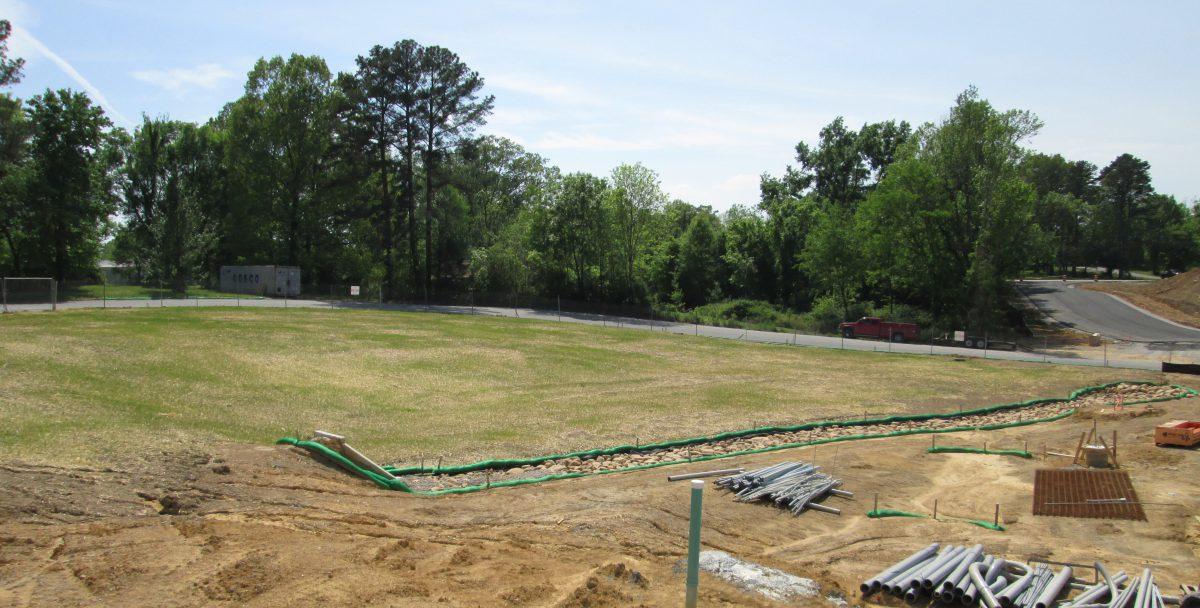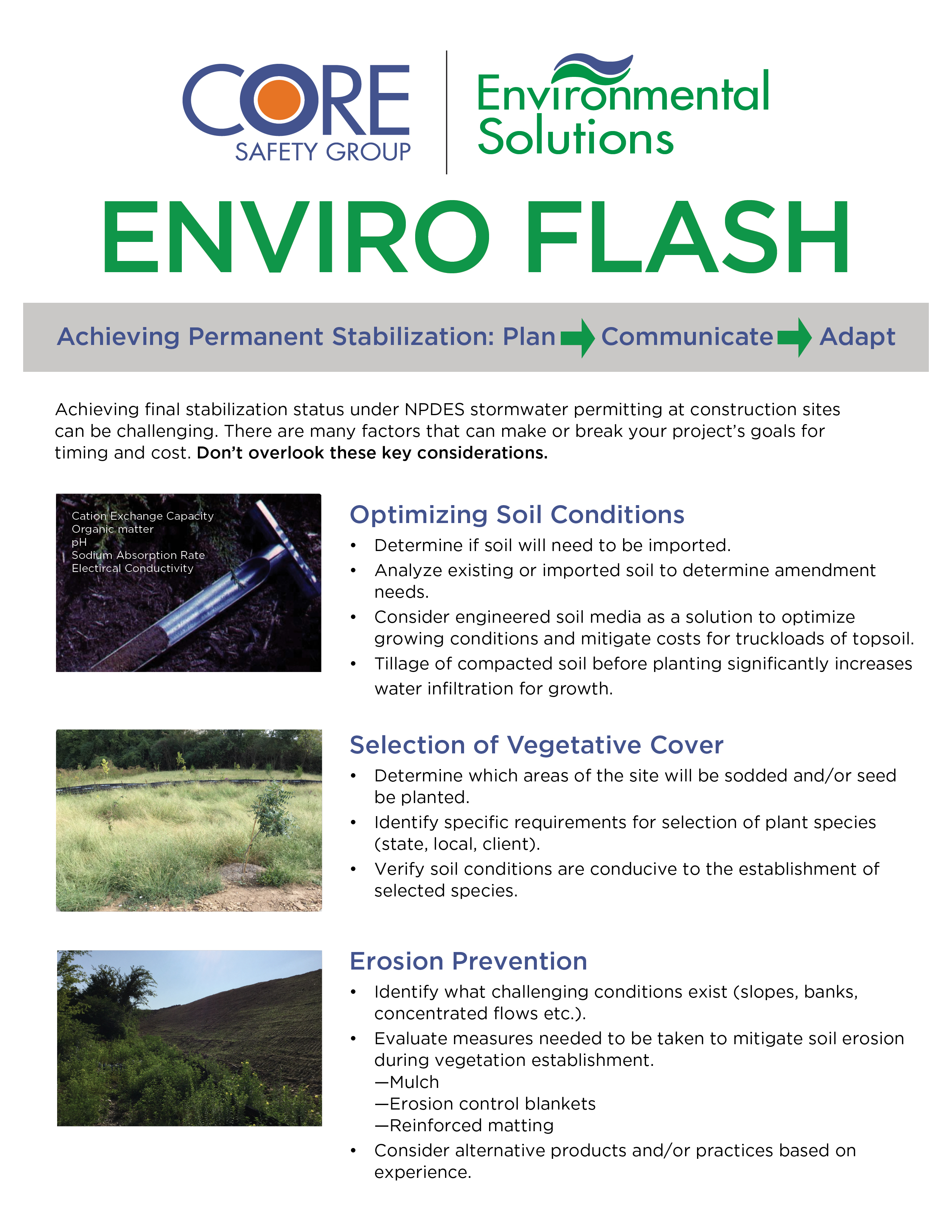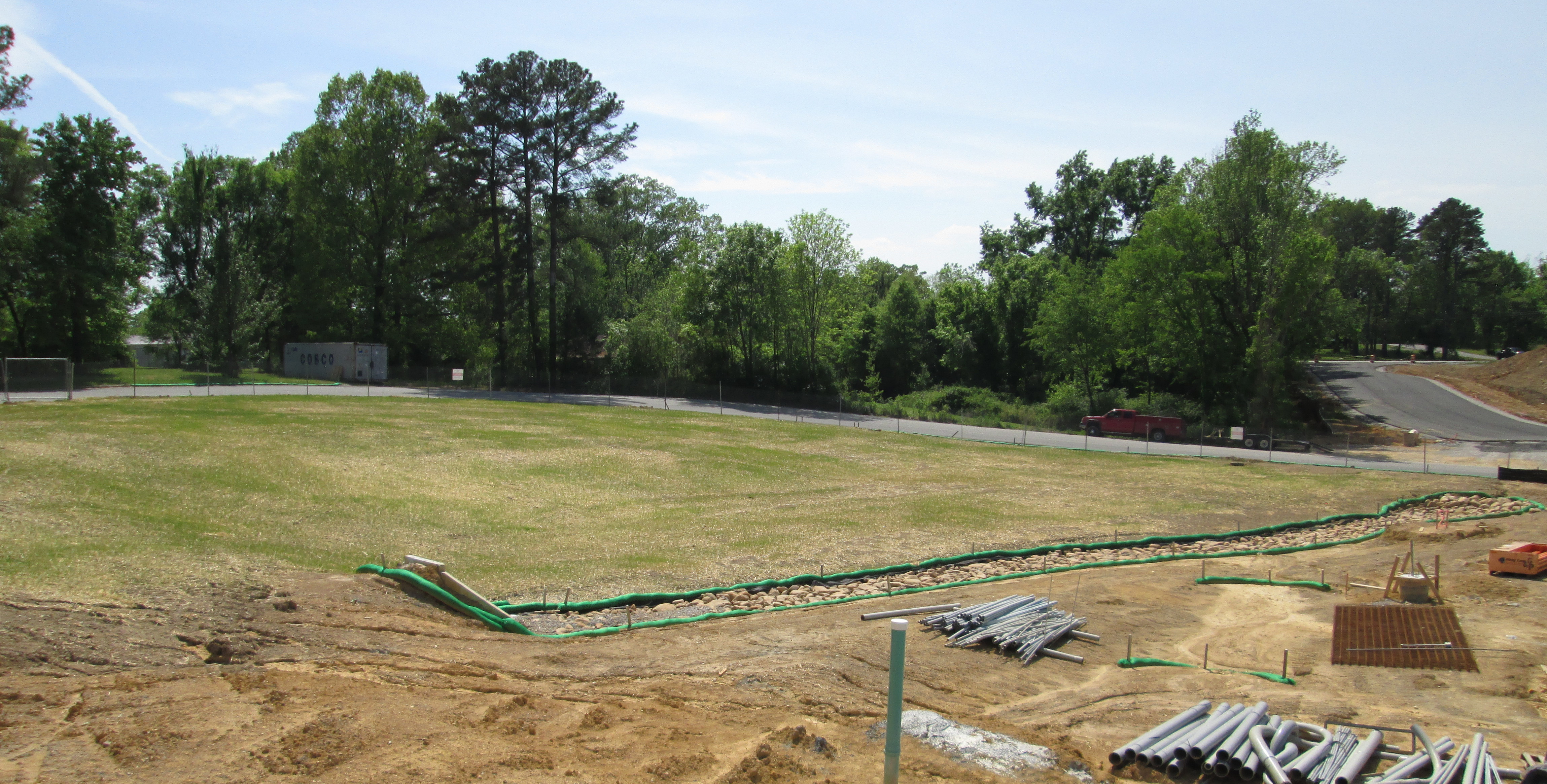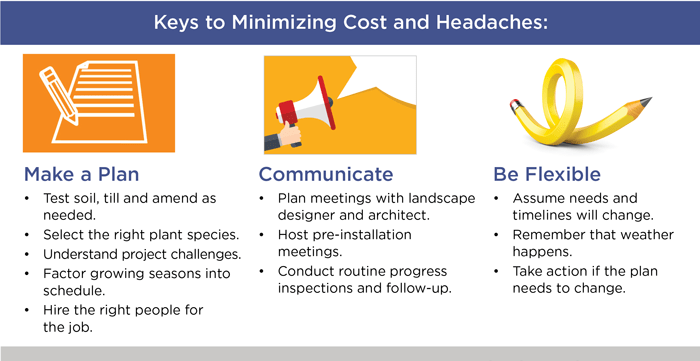
The EPA requires “final stabilization” of soil on a construction site under the National Pollutant Discharge Elimination System (NPDES) permit program and defines this as:
- All soil disturbing activities at the [construction] site have been completed and either of the two following criteria are met:
- A uniform (e.g,, evenly distributed, without large bare areas) perennial vegetative cover with a density of 70 percent of the native background vegetative cover for the area has been established on all unpaved areas and areas not covered by permanent structures, or
- Equivalent permanent stabilization measures (such as the use of riprap, gabions, or geotextiles) have been employed.
Achieving final stabilization status at construction sites can be challenging. There are many factors that can make or break your project’s goals for timing and cost. Here are some key considerations courtesy of CORE Safety’s Environmental Compliance Manager, Joe Welch.
Key considerations with soil stabilization:
Optimizing Soil Conditions
- Determine if soil will need to be imported.
- Analyze existing or imported soil to determine amendment needs.
- Consider engineered soil media as a solution to optimize growing conditions and mitigate costs for truckloads of topsoil.
- Tillage of compacted soil before planting significantly increases water infiltration for growth.
Selection of Vegetative Cover
- Determine which areas of the site will be sodded and/or seed be planted.
- Identify specific requirements for selection of plant species (state, local, client).
- Verify soil conditions are conducive to the establishment of selected species.
Erosion Prevention
- Identify what challenging conditions exist (slopes, banks, concentrated flows etc.).
- Evaluate measures needed to be taken to mitigate soil erosion during vegetation establishment.
—Mulch
—Erosion control blankets
—Reinforced matting
- Consider alternative products and/or practices based on experience.

Planting and Installation
- Consider how growing seasons will impact stabilization efforts.
- Adjust the sequencing of activities as needed to achieve stabilization by the target date.
- Ensure the keys to successful planting and/or installation of erosion prevention measures are reflected in planting and installation plans.
- Verify that the contractor selected to carry out stabilization requirements has the necessary knowledge, capabilities and availability to fully execute the plan.
Care and Maintenance
- Verify what level of irrigation is required and how will this be achieved.
- Understand the expected timetable for vegetation growth and establishment.
- Periodically inspect progress towards final stabilization and adjust strategies as needed.
- Understand what “behind schedule” looks like, and what would trigger corrective actions.
- Ensure special instructions from the landscape designer are followed and discuss any changes that need to be made in the design.

For more information or for assistance with soil stabilization on your site, contact us.



